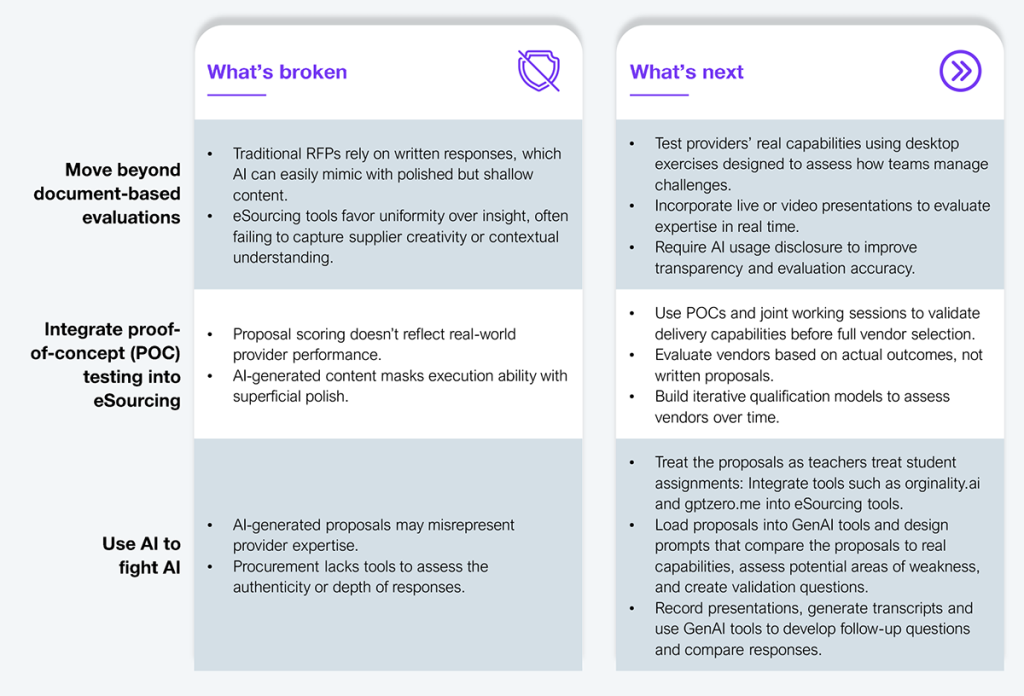Crusty, old RFPs are dead, and sales teams are celebrating the technology that has defeated procurement’s dreaded go-to tool. With generative AI (GenAI), sales teams can load an RFP into a custom-built OpenAI GPT filled with go-to-market collateral and special response instructions. What once took days or weeks of manual work can be done in hours, creating challenges for procurement teams trying to differentiate between real expertise from companies it’s considering hiring and AI-enhanced submissions.
Traditional RFP processes now face questions about their effectiveness. While competitive bidding is not yet obsolete, it must evolve to support alternative procurement approaches, integrate AI-driven validation mechanisms, and refocus on supplier solutions that are best for clients’ requirements rather than static proposal evaluations.
For decades, procurement teams have relied on RFPs and eSourcing tools to run structured, repeatable vendor selection processes. RFPs have driven efficiency, compliance, and cost savings. However, long, tedious lists of detailed questions and vast attachment requests create nightmares for providers and internal stakeholders alike. The principal issues are:
RFPs aren’t dead yet, but enterprises must be smarter about how to get the best results from a competitive bid process. The RFP was never the best tool—it was simply a way to collect responses efficiently. It has always been too tedious and lacked collaboration with bidders, rarely allowed for bidders to provide custom solutions that would fit requirements better, and was far too focused on written proposals rather than oral presentations—which is what we all know matters most.
Rather than abandoning competitive bidding and eSourcing, procurement teams should leverage them differently, focusing less on written proposals and more on dynamic supplier assessments.

Source: HFS Research, 2025
Don’t trash your eSourcing tools yet. In an environment where GenAI is flooding RFP processes with polished, machine-generated content, procurement must rethink how to use these platforms. The future of eSourcing lies in augmenting traditional sourcing methodologies with dynamic, performance-driven methods.
Procurement leaders should stop relying on proposal scoring and embrace real-time, real-world supplier evaluation that GenAI can’t beat. That means using eSourcing methods to support:
This shift requires eSourcing tools to evolve from document repositories to decision intelligence engines—platforms that combine AI-assisted validation, supplier performance analytics, and live collaboration features.
RFPs and eSourcing tools aren’t dead—but using them the same way in an AI-powered world is a fast track to irrelevance. GenAI has exposed just how brittle and performative the traditional procurement process really is. Procurement teams must stop treating proposal documents as proxies for vendor capability and start investing in smarter, outcome-driven strategies.
The future belongs to procurement leaders who reimagine competitive bidding as a performance-based, AI-assisted decision process—one that values real engagement, real delivery, and real results over the illusion of thoroughness. Don’t ditch your tools—upgrade your methodology.
Register now for immediate access of HFS' research, data and forward looking trends.
Get StartedIf you don't have an account, Register here |
Register now for immediate access of HFS' research, data and forward looking trends.
Get Started